Yamaha YFM40FBW Service Manual (2006 Edition)
Product Gallery
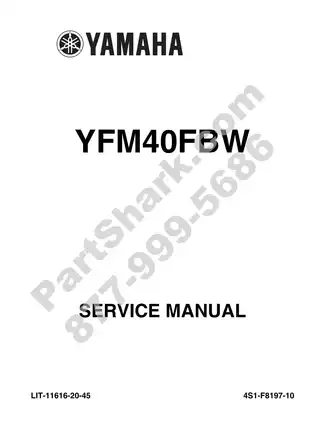
Sample pages from the Yamaha YFM40FBW Service Manual (2006 Edition) manual

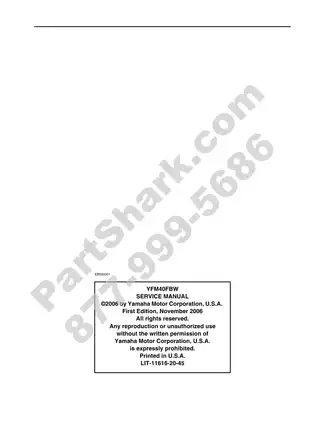
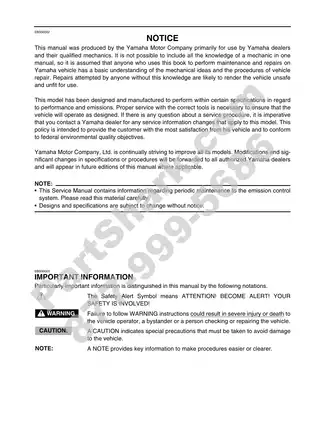
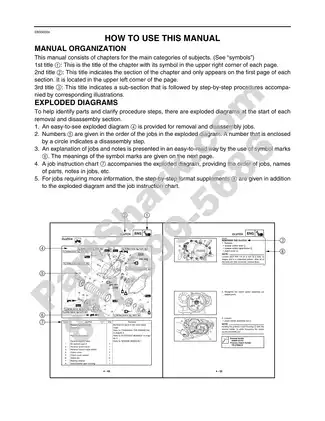
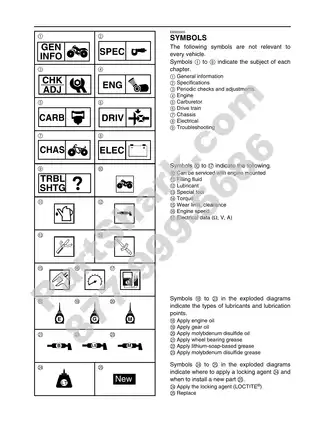
Purchase Information
Yamaha YFM40FBW Service Manual (2006 Edition) - Technical Specifications
- File Size:
- 13.43 MB
- File Type:
- Language:
- English
- Printable:
- Yes
- Estimated Download Time:
- 0.28 Minutes
- Delivery Format:
- Digital (PDF) - Instant Access
- Category:
- ATV
- Brand:
- Yamaha
Yamaha Models and Parts Covered in this ATV Manual
- YFM40FBW (2006)
Yamaha Yamaha YFM40FBW Service Manual (2006 Edition) - Complete Manual Information
Overview of the Yamaha YFM40FBW Service Manual
The Yamaha YFM40FBW Service Manual is an essential guide for DIY enthusiasts and professional technicians alike who are involved in servicing and repairing the Yamaha YFM40FBW ATV. This manual, published in 2006, provides comprehensive coverage on maintenance, troubleshooting, and repair practices tailored specifically for this model, ensuring that every moment you spend on your ATV is productive and enjoyable.
Key Features
- Detailed descriptions of maintenance procedures for various ATVs.
- Clear instructions for troubleshooting both mechanical and electrical issues.
- Comprehensive specifications pertinent to the YFM40FBW model, including diagrams and torque specifications.
- Unique insights into the design characteristics of the vehicle, allowing riders to understand their machine better.
What's Inside
The manual is organized into the following chapters:
- General Information - Includes important safety information and guidelines for effective use of the manual.
- Specifications - Detailed specifications and parameters setup for the vehicle.
- Periodic Checks and Adjustments - A chart detailing the recommended maintenance schedule and best practices.
- Engine - Detailed instructions on engine removal, adjustments, and troubleshooting.
- Transmission - Insight into the transmission system, including removal and checks.
- Electrical System - Covers all electrical components, their functions, and how to troubleshoot them.
- Chassis - Guidelines for maintenance and inspections on the chassis and suspension.
- Troubleshooting - Systematic approach for diagnosing problems in performance.
- Repair Procedures - Step-by-step guidance on performing various repair tasks, supported by illustrations.
- Parts and Accessories - Descriptions for parts and suitable accessories to enhance ATV performance and longevity
Download Instructions for Yamaha ATV Manual
Frequently Asked Questions - Yamaha ATV Manual
What does this Yamaha manual cover?
This comprehensive service manual covers detailed repair procedures, maintenance schedules, troubleshooting guides, and technical specifications for Yamaha YFM40FBW Service Manual (2006 Edition). It includes information for the following models: - YFM40FBW (2006).
Is this manual suitable for beginners?
Yes, this Yamaha manual is designed for both professional technicians and DIY enthusiasts. It includes step-by-step procedures with clear illustrations and safety guidelines for ATV maintenance and repair.
What file format will I receive?
You will receive this manual as a PDF file (13.43 MB), which is compatible with all devices. The manual is fully searchable and printable for your convenience.
How quickly can I access the manual after purchase?
You'll receive instant access to your Yamaha ATV manual immediately after payment completion. The download link is valid for 3 days, with lifetime re-download guarantee.
Can I print specific sections of the manual?
Absolutely! This digital manual allows you to print any section you need, from individual pages to complete chapters, making it perfect for workshop use.
Yamaha Yamaha YFM40FBW Service Manual (2006 Edition) Customer Reviews and Feedback
Read what our customers say about this Yamaha ATV manual and share your own experience.
Add Comment
This policy contains information about your privacy. By posting, you are declaring that you understand this policy:
- Your name, rating, website address, town, country, state and comment will be publicly displayed if entered.
- Aside from the data entered into these form fields, other stored data about your comment will include:
- Your IP address (not displayed)
- The time/date of your submission (displayed)
- Your email address will not be shared. It is collected for only two reasons:
- Administrative purposes, should a need to contact you arise.
- To inform you of new comments, should you subscribe to receive notifications.
- A cookie may be set on your computer. This is used to remember your inputs. It will expire by itself.
This policy is subject to change at any time and without notice.
These terms and conditions contain rules about posting comments. By submitting a comment, you are declaring that you agree with these rules:
- Although the administrator will attempt to moderate comments, it is impossible for every comment to have been moderated at any given time.
- You acknowledge that all comments express the views and opinions of the original author and not those of the administrator.
- You agree not to post any material which is knowingly false, obscene, hateful, threatening, harassing or invasive of a person's privacy.
- The administrator has the right to edit, move or remove any comment for any reason and without notice.
Failure to comply with these rules may result in being banned from submitting further comments.
These terms and conditions are subject to change at any time and without notice.
Comments (3)